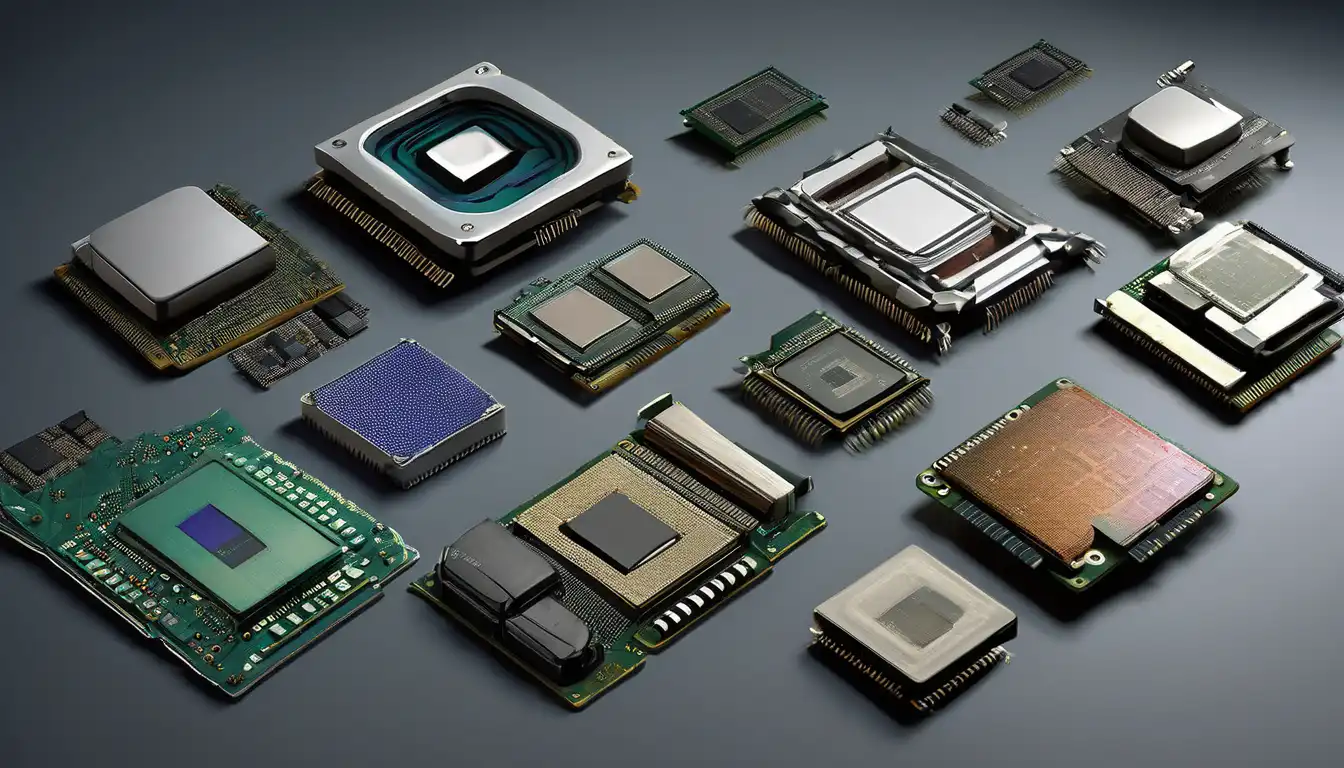The Dawn of Computing: Early Processor Beginnings
The evolution of computer processors represents one of the most remarkable technological journeys in human history. Beginning with primitive vacuum tube systems in the 1940s, processors have undergone revolutionary changes that have fundamentally transformed how we live, work, and communicate. The first electronic computers, such as ENIAC in 1946, utilized thousands of vacuum tubes to perform basic calculations, consuming enormous amounts of power and requiring constant maintenance.
These early processors operated at speeds measured in kilohertz and occupied entire rooms. The transition from mechanical to electronic computing marked a pivotal moment in technological history, setting the stage for the rapid advancements that would follow. The limitations of vacuum tube technology, including high power consumption, frequent failures, and massive physical size, drove researchers to seek more efficient alternatives.
The Transistor Revolution: 1950s-1960s
The invention of the transistor in 1947 at Bell Labs marked the beginning of a new era in processor development. By the 1950s, transistors began replacing vacuum tubes, offering significant advantages in size, reliability, and power efficiency. This transition enabled the development of smaller, more powerful computers that could be used in commercial and scientific applications.
During this period, processors evolved from discrete transistor designs to early integrated circuits. The introduction of the first commercially available microprocessor, the Intel 4004 in 1971, represented a quantum leap in processor technology. This 4-bit processor contained 2,300 transistors and operated at 740 kHz, demonstrating the potential for putting entire central processing units on single chips.
Key Milestones in Transistor Era
- 1947: Invention of the transistor at Bell Labs
- 1958: First integrated circuit developed by Jack Kilby
- 1965: Gordon Moore proposes Moore's Law
- 1971: Intel releases the 4004 microprocessor
The Microprocessor Boom: 1970s-1980s
The 1970s witnessed an explosion in microprocessor development, with companies like Intel, Motorola, and Zilog competing to create more powerful processors. The Intel 8080, released in 1974, became the foundation for many early personal computers. This 8-bit processor operated at 2 MHz and contained 6,000 transistors, representing a significant improvement over earlier designs.
The 1980s saw the rise of 16-bit and 32-bit processors, with Intel's 8086 and 80286 processors establishing the x86 architecture that would dominate personal computing for decades. During this period, processor clock speeds increased dramatically, from a few megahertz to tens of megahertz. The competition between Intel and emerging competitors like AMD drove rapid innovation and price reductions, making computers increasingly accessible to consumers and businesses.
The Performance Race: 1990s-2000s
The 1990s marked the beginning of the "megahertz wars," with processor manufacturers competing to deliver ever-higher clock speeds. Intel's Pentium processors and AMD's K6 series pushed performance boundaries while introducing new technologies like MMX instructions for multimedia applications. Processor architectures became increasingly complex, with features like superscalar execution and out-of-order processing becoming standard.
By the early 2000s, clock speeds had reached the gigahertz range, but physical limitations began to emerge. The industry faced challenges with power consumption and heat dissipation, leading to a shift in focus from raw clock speed to multicore architectures. Intel and AMD began developing dual-core and quad-core processors, marking a fundamental change in processor design philosophy.
Architectural Innovations
- Superscalar architecture for parallel instruction execution
- Pipelining techniques for improved efficiency
- Cache memory hierarchies for faster data access
- 64-bit computing for enhanced memory addressing
The Multicore Era: 2000s-Present
The transition to multicore processors represented a paradigm shift in computing. Instead of relying solely on increasing clock speeds, manufacturers began integrating multiple processing cores on single chips. This approach allowed for better performance scaling while managing power consumption and heat generation more effectively.
Modern processors feature sophisticated multicore architectures with advanced technologies like simultaneous multithreading, large cache memories, and integrated graphics. The evolution continues with heterogeneous computing, where different types of cores (performance and efficiency cores) work together to optimize power and performance based on workload requirements.
Current Trends and Future Directions
Today's processor evolution focuses on several key areas, including artificial intelligence acceleration, quantum computing research, and specialized processing units for specific applications. The integration of AI accelerators directly into processors represents the latest frontier in processor development, enabling new capabilities in machine learning and data analysis.
Looking forward, researchers are exploring technologies beyond traditional silicon-based computing, including photonic processors, neuromorphic computing, and quantum processors. These emerging technologies promise to continue the remarkable evolution that has characterized processor development for decades. The journey from vacuum tubes to modern multicore processors demonstrates humanity's relentless pursuit of computational power and efficiency.
Emerging Technologies
- AI and machine learning accelerators
- Quantum computing processors
- Neuromorphic computing architectures
- 3D chip stacking and advanced packaging
The evolution of computer processors has been nothing short of extraordinary, transforming from room-sized machines to powerful chips that fit in our pockets. This continuous innovation has driven progress across all sectors of society, enabling advancements in science, medicine, communication, and entertainment. As we look to the future, the ongoing evolution of processor technology promises to unlock even more remarkable capabilities that will shape our world in ways we can only begin to imagine.
